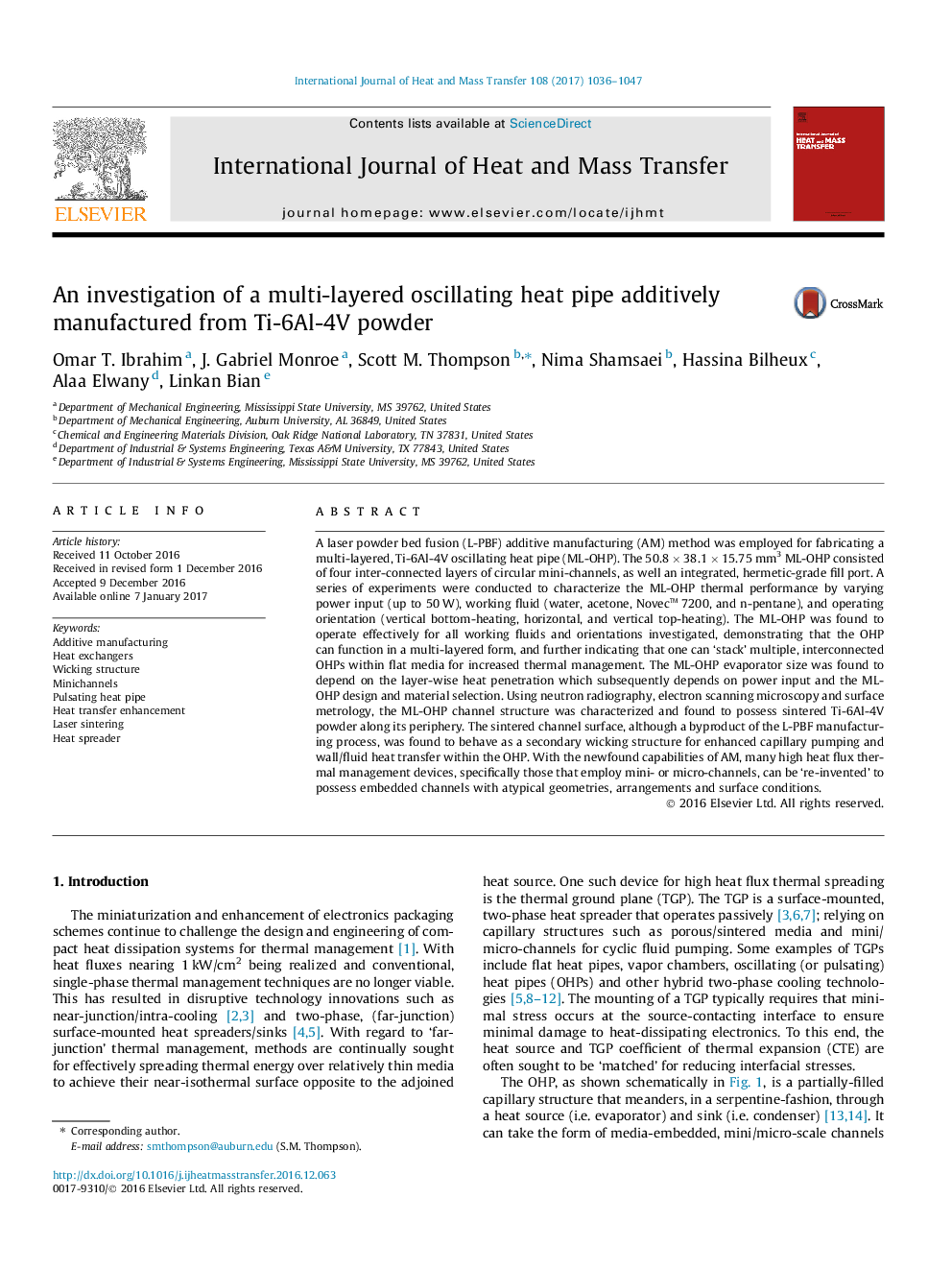| Article ID | Journal | Published Year | Pages | File Type |
|---|---|---|---|---|
| 4994339 | International Journal of Heat and Mass Transfer | 2017 | 12 Pages |
Abstract
A laser powder bed fusion (L-PBF) additive manufacturing (AM) method was employed for fabricating a multi-layered, Ti-6Al-4V oscillating heat pipe (ML-OHP). The 50.8 Ã 38.1 Ã 15.75 mm3 ML-OHP consisted of four inter-connected layers of circular mini-channels, as well an integrated, hermetic-grade fill port. A series of experiments were conducted to characterize the ML-OHP thermal performance by varying power input (up to 50 W), working fluid (water, acetone, Novec⢠7200, and n-pentane), and operating orientation (vertical bottom-heating, horizontal, and vertical top-heating). The ML-OHP was found to operate effectively for all working fluids and orientations investigated, demonstrating that the OHP can function in a multi-layered form, and further indicating that one can 'stack' multiple, interconnected OHPs within flat media for increased thermal management. The ML-OHP evaporator size was found to depend on the layer-wise heat penetration which subsequently depends on power input and the ML-OHP design and material selection. Using neutron radiography, electron scanning microscopy and surface metrology, the ML-OHP channel structure was characterized and found to possess sintered Ti-6Al-4V powder along its periphery. The sintered channel surface, although a byproduct of the L-PBF manufacturing process, was found to behave as a secondary wicking structure for enhanced capillary pumping and wall/fluid heat transfer within the OHP. With the newfound capabilities of AM, many high heat flux thermal management devices, specifically those that employ mini- or micro-channels, can be 're-invented' to possess embedded channels with atypical geometries, arrangements and surface conditions.
Keywords
Related Topics
Physical Sciences and Engineering
Chemical Engineering
Fluid Flow and Transfer Processes
Authors
Omar T. Ibrahim, J. Gabriel Monroe, Scott M. Thompson, Nima Shamsaei, Hassina Bilheux, Alaa Elwany, Linkan Bian,
